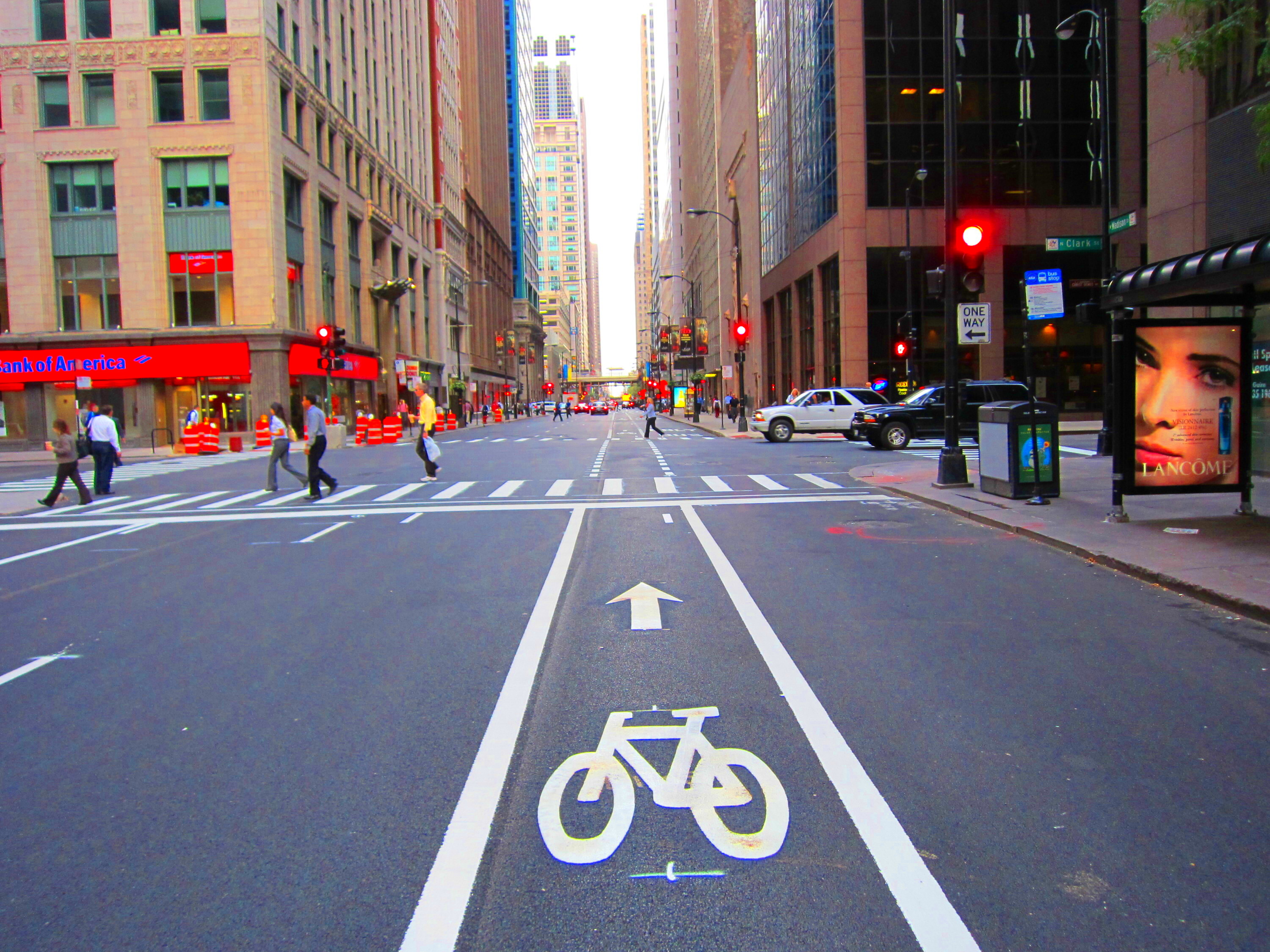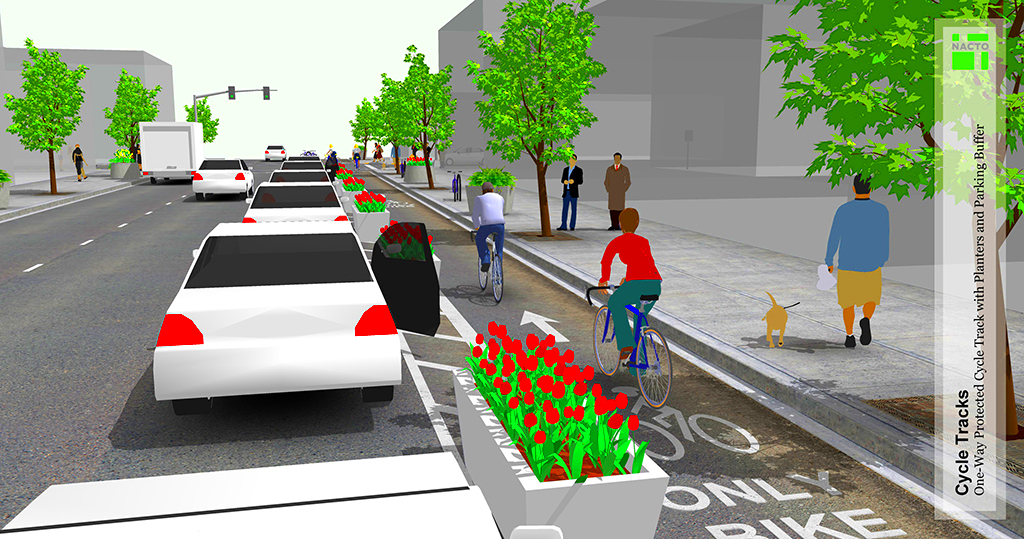Bicycle lanes are fast becoming a necessary component of urban design in various regions of America. They offer a secure method for riders to use when heading to work, thus lessening the chances of causing an accident as well as traffic jams or contamination caused by automobiles.From packed metropolises to countryside roads, bike paths are altering how we move around the world. This article will delve into their significance, cities that are examples, and photographers’ perspectives on cycling culture.
Why Bicycle Lanes Are Important for Urban Areas

Bicycle lanes are instrumental in enhancing the living standards in towns. Thus, they are important for the following reasons:
- Safety for Cyclists: Dedicated bike lanes reduce the risk of accidents by providing a separate space for cyclists, away from fast-moving vehicles.
- Environmental Benefits: Encouraging more people to bike reduces carbon emissions, contributing to a cleaner environment.
- Less Traffic Congestion: More cyclists mean fewer cars on the road, easing traffic in congested city centers.
- Improved Public Health: Cycling promotes physical activity, which has long-term health benefits, reducing healthcare costs.
- Community Building: Bike lanes foster a sense of community as people engage more with their surroundings compared to when they're isolated in cars.
Not to mention, these roads aren’t purely functional; they show what a city really cares about sustainability and healthy living. In fact, as more urban areas are starting to promote cycling, the need for bike-lanes that are easy to use is rising like never before.
Most Popular Cities with Bicycle Lanes in the USA

The USA is home to numerous cities that have made their mark as bicycle friendly. These include:
| City | Noteworthy Bicycle Lanes |
|---|
| Portland, Oregon | Known for its extensive network of bike lanes and trails, Portland has long been a pioneer in creating a cycling-friendly city. |
| New York City, New York | With its bustling streets, NYC has incorporated hundreds of miles of bike lanes, making it easier for residents and tourists to cycle around the city. |
| Minneapolis, Minnesota | Recognized for its year-round commitment to biking, Minneapolis boasts numerous off-road bike paths and dedicated lanes. |
| San Francisco, California | Despite its challenging hills, San Francisco has developed a robust bike lane system, encouraging more commuters to choose cycling over driving. |
| Washington, D.C. | The nation's capital is a standout for its growing network of protected bike lanes, making it safer for cyclists. |
In fact, these urban centers exemplify not just the top towns with regards to cycle paths, but also indicate the extent to which cycling can smoothly skim the edges of urbanity and hence render movement within this environment sustainable as well as more democratic.
Challenges in Capturing Bicycle Lanes in Photographs
Although taking pictures of bike paths might appear easy, there are always special difficulties to be met. Such difficulties come mainly from the kinetic essence of cyclists in action, different urban topographies and relation to other parts of the surroundings. Several are the typical problems faced by photographers as follows:
- Timing the Shot: Cyclists move quickly, which makes it difficult to capture sharp, well-composed images. Photographers must anticipate the movement and be ready to shoot at just the right moment.
- Lighting Conditions: Bicycle lanes are often found in bustling city centers, where shadows from tall buildings or streetlights can create difficult lighting conditions. Balancing natural and artificial light is key to a good shot.
- Urban Clutter: In cities, bicycle lanes often run alongside heavy traffic, pedestrians, and signage. Capturing the lane clearly without the distraction of urban clutter can be a challenge.
- Weather Factors: Rain, fog, and snow can obstruct clear views of bicycle lanes. However, these weather conditions can also add an artistic touch, depending on how they are incorporated into the photograph.
- Perspective and Composition: To highlight the importance of the bicycle lane, photographers need to think creatively about angles. Wide shots might show the lane within its urban context, while close-ups can capture the details of the lane and its users.
Patience, competence and a good grasp of the thesaurus as well as an environmental understanding is necessary in order to scale the hurdles. Some even go as far as to say that with the appropriate approach, these obstacles can be turned into compelling
images and tales.
How Photographers Can Best Capture Bicycle Lanes
Enough is enough! Of late this world has become so fucked up; every thing has turned out to be so boring that I could not finish even one chapter today.’ Here are some useful tips for photographers who want to get the best possible snaps of cycle paths:
- Use a Wide-Angle Lens: A wide-angle lens helps capture the broader context of the bicycle lane, including the surrounding architecture, other cyclists, and the city atmosphere. This type of shot conveys the scale and significance of cycling infrastructure.
- Focus on Action Shots: Capture cyclists in motion to show how the bicycle lanes are being used. Action shots bring energy to the image and highlight the dynamism of city cycling.
- Play with Different Times of Day: The time of day can dramatically alter the mood of a photograph. Early morning or late evening light provides a softer, more golden hue, while midday might offer more stark and contrasting lighting.
- Incorporate Human Elements: Including people in your shots adds life to your photographs. Capturing cyclists interacting with the urban landscape can make the image feel more relatable and authentic.
- Experiment with Different Angles: Low-angle shots can make cyclists and bicycle lanes appear more prominent and dramatic. Drone shots, on the other hand, offer a bird’s-eye view of the cycling infrastructure, showcasing the layout and connectivity of lanes.
A comprehensive look at the different ways photographers may capture not only the picturesque nature of cycle paths, but also vivid visual narratives about city transport systems and the bicycle lifestyle in various urban centers.
Impact of Bicycle Lanes on City Life and Sustainability
Bicycle routes serve as more than just roads for bikes; they are one of the most important factors in making cities sustainable and livable. Here’s how they contribute:
- Environmental Benefits: Bicycle lanes encourage more people to cycle rather than drive, reducing carbon emissions. Cities with extensive bike lane networks see a notable drop in air pollution, making them healthier places to live.
- Reduction in Traffic Congestion: With more people choosing bikes over cars, city traffic becomes more manageable. This not only shortens travel times but also reduces the wear and tear on roads, saving cities on maintenance costs.
- Improved Public Health: Cycling is a low-impact, highly effective form of exercise. By providing safe spaces for cyclists, cities promote healthier lifestyles, which in turn lowers healthcare costs associated with sedentary habits.
- Economic Boost: Bicycle lanes can enhance local economies. Cyclists are more likely to stop at local businesses than drivers, supporting small businesses and contributing to a thriving local economy.
- Social Benefits: Bicycle lanes encourage social interaction. Instead of being isolated in a car, cyclists are more likely to engage with their surroundings, building a greater sense of community.
Cities are rapidly developing and in this constant change, the presence of bicycle lanes is becoming more and more important for fostering sustainability as well as enhancing urban life. It marks a move towards greener, more integrated and healthier cities.
FAQ About Bicycle Lanes and Photography
In this sense, below are examples of frequently asked questions and ideal techniques associated with capturing pictures of bicycle lanes:
1. What is the best time to photograph bicycle lanes?
Generally, bicycle lanes can be best captured at early morning or late afternoon. It is often called the "golden hour" because of its soft natural lighting which makes your photographs look fantastic. In fact, midday hours tend to produce strong contrasts and shadowing problems, while overcast days give uniform illumination.
2. How do I avoid distractions in urban bicycle lane photos?
By reason of vehicles, moving people, boards, etcetera, cityscapes are not short of distractions. If you want to avoid such things then you may want to compose your photographs very well. An effective way to achieve this is through using a low angle that focuses on the cyclist and his/her lane while making the rest fade away. Another method involves using a wide aperture in order to shorten depth field such that one can blur away from the bustling scenes in the background.
3. What type of camera should I use to capture bicycle lanes?
It is possible to utilize well any kind of camera. Any smartphone or high-end digital single-lens reflex (DSLR) would work well if you want excellent pictures of the entire scene. Yet still, good quality
images can equally be taken using phones that come with quality camera specifications; this is made possible if there is editing software at play.
4. Should I include cyclists in my bicycle lane photos?
Integrating cyclist participation may lead to a more engaging and familiar tale. The lane is defined by vibrant action shots of cyclists which brings out its purpose. However, if one wants to emphasize on infrastructure, one can opt for a shot of an empty lane.
5. What are the best angles for photographing bicycle lanes?
Experiment with varying angles to discover most appropriate for the scene. Drones enable the perfect aerial shots to showcase the design of the paths, while shots taken from below add drama to cyclists and lanes. Side views accentuate biker movement, particularly in cities.
Conclusion: The Role of Photography in Promoting Bicycle-Friendly Cities
The role of photography is very significant in bringing to the limelight the importance of bicycle lanes and how they contribute in sustainable urban living. There are different ways in which this can be done, but one such way is through powerful
images that promote cycling as an alternative form of transport or commuting.Through their lenses, photographers capture on camera the moods of these lanes thus creating a conclusion for cyclists’ advocates on why more funds should be allocated towards making cities safer for cyclists.
 Bicycle lanes are instrumental in enhancing the living standards in towns. Thus, they are important for the following reasons:
Bicycle lanes are instrumental in enhancing the living standards in towns. Thus, they are important for the following reasons: The USA is home to numerous cities that have made their mark as bicycle friendly. These include:
The USA is home to numerous cities that have made their mark as bicycle friendly. These include:
 admin
admin








